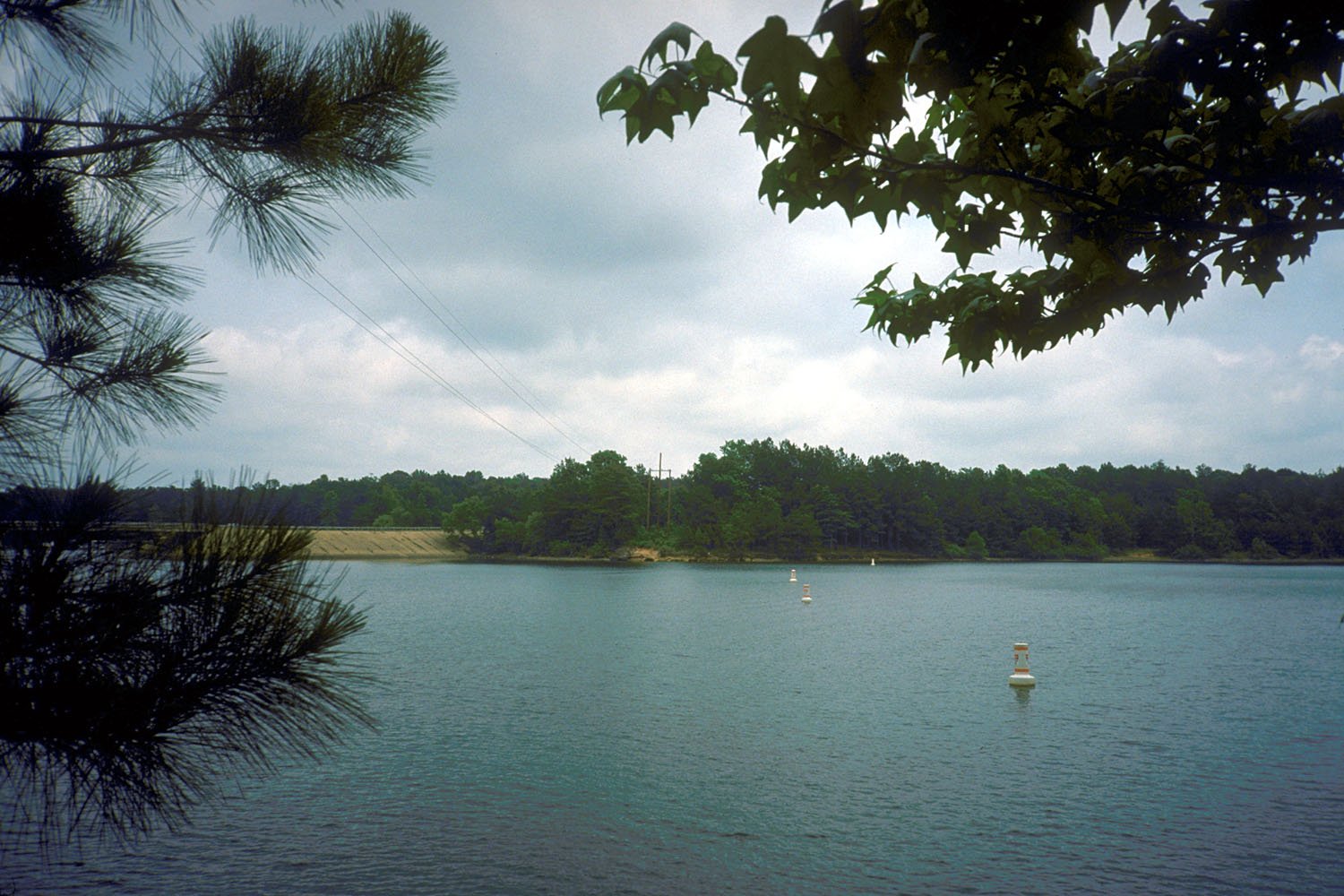
The EPA Faces Lawsuit Over Slaughterhouse Pollution in Waterways
The Environmental Integrity Project and other advocates are suing the EPA for failing to update wastewater pollution standards for meat processing facilities for 15 years straight.

Above: Lake O' the Pines in East Texas
The Trump administration has taken another hard jab at protections for the nation’s rivers and lakes—and a broad coalition of advocates is swinging right back.
Last week, Environmental Integrity Project (EIP) and other groups took Trump’s Environmental Protection Agency (EPA) to federal court over water pollution rules they deem “weak and outdated.” At issue are facilities that process beef, pork, or poultry before releasing wastewater into freshwater sources. Although the effluent can contain oxygen-sucking chemicals and dangerous pathogens, the EPA has resisted updating pollution standards for the facilities for 15 years. Despite calls from advocates, the agency said in October it would not change the standards this year. Now the United States Court of Appeals for the Fourth Circuit is being asked to intervene.
The court action has roots in an EIP report released late last year that showed U.S. slaughterhouses were pushing nitrogen, phosphorus, bacteria, and other contaminants into waterways well in excess of their federal permits. In the Texas, poultry juggernauts Pilgrim’s Pride and Tyson were discharging high volumes of blood, urine, feces and feathers into East Texas rivers and lakes, creating low-oxygen environments conducive to algal blooms and fish kills. EIP urged the EPA in October 2018 to lower the amount of pollutants that plants are allowed to discharge from 103 milligrams of nitrogen per liter to 35 milligrams per liter, which many slaughterhouses already do voluntarily.
But if EPA officials read the report at all, they didn’t budge.
“It is well past time for EPA to crack down on this public health hazard,” said Sylvia Lam, an EIP attorney. “By not updating these nationwide standards, EPA is rewarding dirty slaughterhouses at the expense of the public.”
The federal Clean Water Act requires the EPA to set pollution limits at meat processing facilities based on the “best available” wastewater treatment technology. But as treatment infrastructure at plants has ratcheted up since 2004, the EPA’s regulatory scheme hasn’t—even though the agency is required to revisit the rules annually. The recent decision comes despite the EPA’s own review of industrial discharges into waterways this year. In October, the agency found that the paper mills and slaughterhouses “contributed the highest nutrient loads across the nutrient discharge rankings analyses for both total nitrogen and total phosphorus” of any other industries. Both nitrogen and phosphorus are responsible for excessive algae growth that robs oxygen from other species in rivers and lakes.
To be fair, the EPA under both Obama and George W. Bush also did not update slaughterhouse pollution rules. But the Trump administration has gone a step further, repeatedly slashed prohibitions against water pollution. In 2017, the president moved to weaken rules for storing toxic ash for power plants, which can contaminate groundwater. The same year, he delayed the implementation of stricter limits for power plants that discharge mercury and other toxic contaminants into waterways. In September, Trump repealed a sweeping set of Obama-era rules that limited pollution discharges into streams and wetlands.
Some East Texas rivers and lakes, where wastewater releases from poultry slaughterhouses are already taking a toll on the environment, could use the extra protection. In 2017, the Pilgrim’s Pride facility Mt. Pleasant pushed an average of 1,755 pounds of nitrogen each day into tributaries of Lake O’ the Pines, a popular fishing and boating destination that’s also a source of drinking water for several local communities. (The typical U.S. meatpacking plant discharges less than a fifth of that amount.) At its plant in Center, Tyson Farms discharged large levels of blood and animal excrement into Cedar Creek, which eventually flows into Toledo Bend Reservoir, a source of drinking water for two states and one of the top bass-fishing lakes in the nation. The U.S. Department of Agriculture has called nutrient loading by poultry operations in Toledo Bend’s watershed “a major concern.”
The discharges likely will only get worse. Sanderson Farms, the fourth biggest poultry company in the United States is ramping up production in the area. Thanks to tax abatements and free land offered by local governments, the company has erected barns holding millions of chickens in five East Texas counties, along with a hatchery in Lindale and a slaughterhouse just north of Tyler. The plant discharges into the Sabine River, a critical habitat for sensitive freshwater mussel species and a major source of drinking water for the city of Longview’s 80,000 residents.
It’s unknown when the Fourth Circuit judges will decide on advocates’ newly filed lawsuit—or how they will decide. But one thing’s clear: For the sake of rivers and lakes in Texas and beyond, it’d be best if they dove right in.
READ MORE:
-
A Decade of Texas Health Care By The Numbers: What do 2010 vs. 2019 comparisons tell us when it comes to lawmakers’ priorities on health care?
-
The Best Texas Observer Longform Stories of the 2010s: We rounded up some of our hardest hitting longreads from the past ten years.
-
Report: Sexual Assault is Common in Immigrant Prisons, but Survivors Aren’t Getting Help: Only three of 23 rape crisis centers serving areas where ICE detention centers are located reported providing therapy or other services to detainees.


